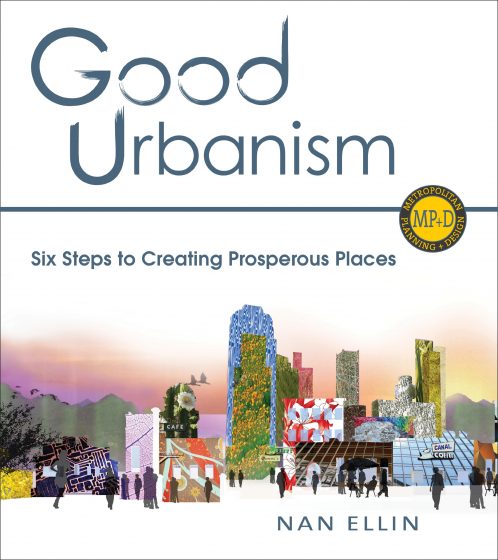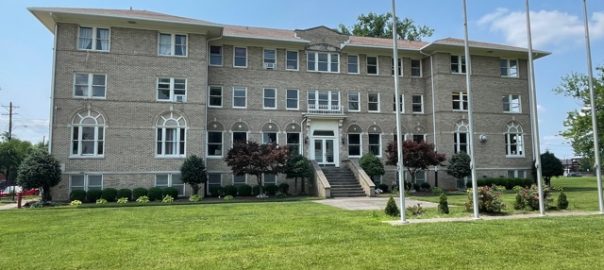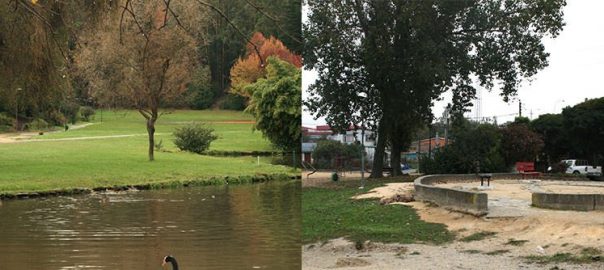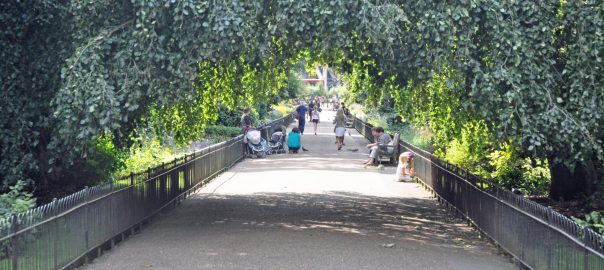A review of Good Urbanism: Six Steps to Creating Prosperous Places by Nan Ellin. 2012. Island Press. ISBN 13: 978-1-61091-374-4. 141 pages. Buy the book.
Many people have a desire to improve spaces in their cities and neighborhoods, but most don’t know where to begin or what steps to take to see a community project through to fruition. Most who have been successful at creating “livable and lovable spaces” succeed through tedious determination of trial and error.
Nan Ellin’s strong desire for environments that “inspire, uplift and sustain us” shines throughout Good Urbanism.

In Good Urbanism, Nan Ellin offers her “positive call to arms to connect us to place” mapping out the process in a clear, cohesive manner that shows the reader how successful interventions have applied these steps through eleven easy-to-follow case studies. Ellin draws on and applies insights from organizational learning, psychology, and the philosophy of pragmatism-grounded theory and wisdom traditions, to create a straightforward, step-by-step approach to a “Path toward Prosperity” in urban spaces.
She quickly and succinctly defines six steps that become the road map for grassroots community members or students to follow toward successful acquisition of resources and execution of what she calls livable and lovable spaces. Icons representing each step reinforce the process and clearly tie the storyline of the case study with each step. The diverse projects and the variety locations of the case studies reinforce the idea that the proposed steps can be effective in any U.S. urban area.
Six steps to prosperous spaces, according to Ellin:
- Present
- Promote
- Prototype
- Propose
- Polish
- Prospect
Dissecting the case studies and clearly defining how each case used the steps she has identified makes the book a good resource for activists as well as professors and students. This short read has no self-indulgent filler. Instead, it is feels like the writer wants to uplift and inspire the reader to take action. A humble, collaborative approach to community action is suggested throughout, which is always good advice. As resources are the make or break of any project, Ellin guides the reader toward “cultivating good ideas” but makes clear the importance of “rallying the resources to realize them”.

Generating desire and enthusiasm to support improvement of places within a community is typically easy. Identifying and acquiring funding to make projects happen is almost always the harder task. Though she calls for a “rally for resources”, a deeper description of successful funding acquisitions or a step-by-step guide for successfully finding funding would be of great assistance to the reader.
While this book could be a reference for urban designers, universities with a strong and engaged learning culture could turn to Good Urbanism as the go-to guide for any civic engagement project, regardless of the discipline the project is housed within.
The book’s optimistic approach is undeniable and refreshing—Ellin’s strong desire for environments that “inspire, uplift and sustain us” shines throughout the read. As to its merits as a guide book to community action, Ellin’s straightforward approach to telling the story and organization of case studies, combined with the overlay of six step icon, makes it a friendly resource for first-time grassroots activists and students.
Traci Sooter
Springfield, MO
On The Nature of Cities
References
Keith G. Tidball, Marianne E Krasny; Greening in the Red Zone – Springer Science & Business Media, Jul 22, 2013.







Leave a Reply